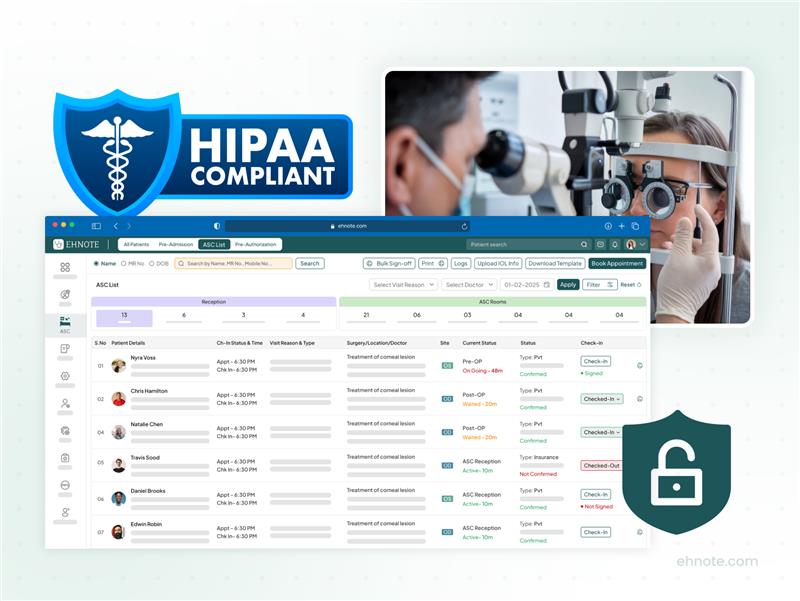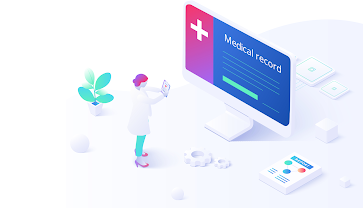How Ophthalmology EHR Software Ensures HIPAA Compliance for Eye Care Practices
Why HIPAA Compliance Matters in Ophthalmology
The Health Insurance Portability and Accountability Act (HIPAA) mandates strict safeguards for PHI. According to the HIPAA Journal, any software used by HIPAA-covered entities (like your ophthalmology practice) must protect PHI if it creates, receives, stores, or transmits it.
For ophthalmologists, this means your Eye Care EHR system must do more than just streamline clinical workflows — it must also meet rigorous HIPAA standards. This is especially critical given the nature of PHI in eye care, which often includes diagnostic imaging, detailed clinical notes, and surgical histories.
The High Stakes of Non-Compliance
HIPAA violations can be costly, with penalties reaching up to $2,134,831 per violation in 2025. Beyond fines, a data breach can significantly damage your practice’s reputation — something no specialist performing LASIK, retinal procedures, or glaucoma management can afford.
Key Features of HIPAA-Compliant Ophthalmology EHR Software
A truly compliant ophthalmology EHR should address the technical, administrative, and physical safeguards outlined in HIPAA. Here’s what to look for:
1. Robust Data Security for PHI Protection
Your EHR must protect PHI whether it’s at rest (stored) or in transit (being sent). This includes:
- End-to-End Encryption: Ensures patient data such as retinal images or treatment plans is secure, both during upload and while being accessed.
- Secure Data Transfer Protocols: Implementation of SSL/TLS protocols to safeguard communications between systems.
2. Role-Based Access Controls
Controlling who can access what data is fundamental:
Customizable Permissions: Front-desk staff can manage scheduling without seeing clinical data, while only ophthalmologists access diagnostic reports.
User Authentication: Unique login credentials for each user ensure accountability and prevent unauthorized access.
3. Audit Trails and Real-Time Monitoring
Ongoing monitoring helps detect and prevent unauthorized access:
- Comprehensive Audit Logs: Tracks every interaction with PHI — from who accessed a visual field test to when edits were made.
- Anomaly Detection: Real-time monitoring flags suspicious activity, allowing quick responses to potential threats.
4. Business Associate Agreements (BAAs)
If your EHR provider accesses or manages PHI, they must sign a BAA, outlining their legal obligations to protect patient data. Always ensure your vendor provides this.
Benefits of a HIPAA-Compliant Eye Care EHR
While HIPAA compliance is the foundation, the right EHR solution should also enhance day-to-day operations:
Improved Efficiency and Streamlined Workflows
- Diagnostic Integration: Automatic syncing with OCT scanners, fundus cameras, and other imaging tools eliminates manual uploads.
- Faster Documentation: Smart templates for cataract exams or glaucoma tracking reduce charting time.
Better Clinical Outcomes
- Unified Records: All patient data — including test results and surgical notes — are centralized, allowing for better-informed decisions.
- Reduced Errors: Automation minimizes human error in data entry, leading to more accurate diagnoses and prescriptions.
Reduced Staff Burnout
- Simplified Compliance Tasks: Automated audit logs and security monitoring reduce the burden of manual compliance tracking.
- User-Friendly Interface: Intuitive layouts and navigation save time, particularly in high-volume clinics.
Scalable for Growth
- Multi-Location Support: Manage multiple clinics within one system while maintaining centralized, compliant data.
- Customizable Features: Whether you specialize in pediatric ophthalmology or LASIK, a flexible EHR system can adapt to your workflow.
Choosing the Right Ophthalmology EHR
Not all EHR platforms are created equal. When evaluating a system for your ophthalmology practice, ensure it:
- Is built specifically for eye care workflows
- Offers built-in HIPAA compliance features
- Supports diagnostic integrations (e.g., OCT, fundus cameras)
- Provides ongoing updates aligned with changing HIPAA rules
As regulatory demands continue to evolve — such as the 2025 updates to breach notification requirements — having an EHR partner that stays current with compliance updates is critical.
Conclusion
HIPAA compliance is not just a legal requirement — it’s a crucial part of maintaining patient trust and delivering high-quality ophthalmic care. A HIPAA-compliant EHR system tailored for eye care ensures your practice remains secure, efficient, and ready to meet the needs of a growing patient base.
By investing in the right tools and staying informed, your ophthalmology practice can thrive in today’s digital healthcare environment — without compromising on compliance or care.

.png)


Comments
Post a Comment